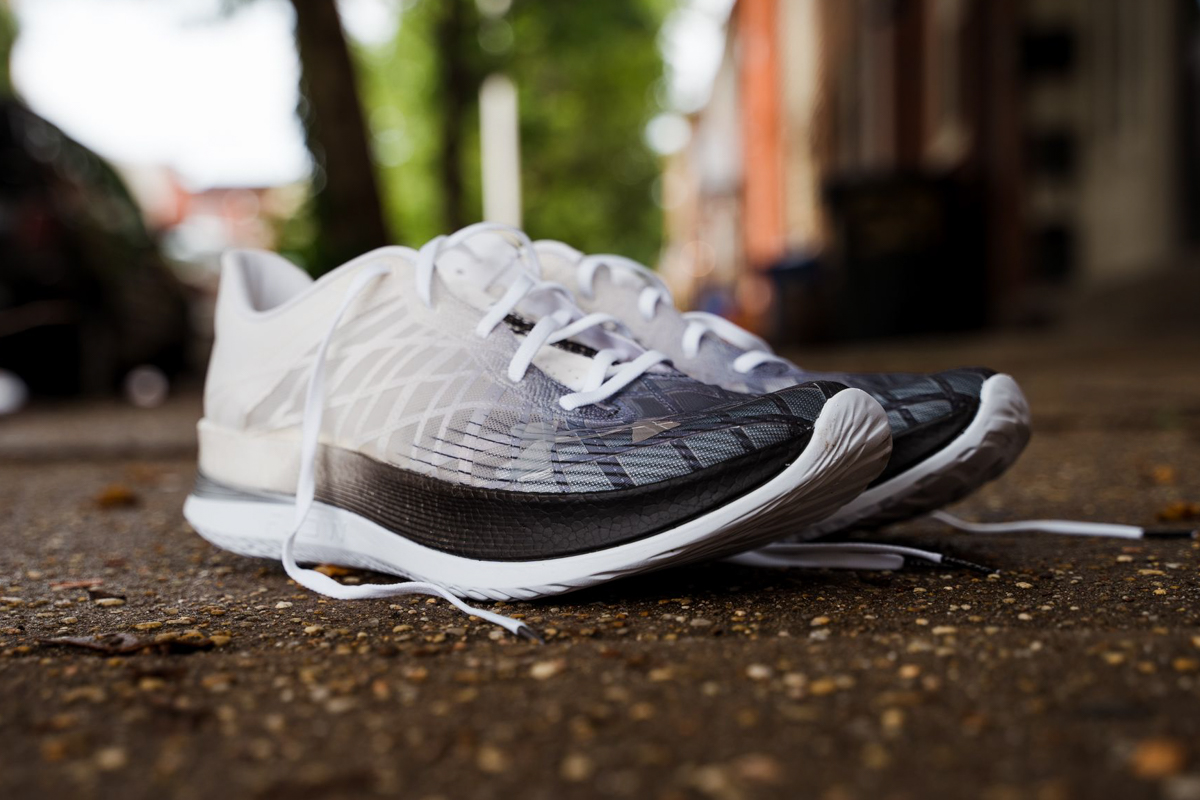
We independently review everything we recommend. When you buy through our links, we may earn a commission.
7.7 oz. (218 g) for a US M9 (Unisex sizing)
36 mm in heel, 28 mm in forefoot (8 mm drop)
Uptempo workouts, races shorter than a marathon
Pebax and Flow midsole, WARP 2.0 upper, no outsole rubber
$249
BRANDON: BREAKING NEWS. This just in, Under Armour has finally hit the mark. I repeat, Under Armour has hit the mark and created a competitive running shoe for the modern racing scene. I had a special opportunity to test and race a marathon in the Under Armour Flow Velociti Elite last fall, long before it reached the public. The shoe is stylish, with a clean black and white look that speaks all business on race day.
Before we get too excited, I don’t think I’d recommend the Flow Velociti Elite for a marathon. Instead, it’s more suitable for racing 13.1 miles and below. The $250 price tag gets you a WARP 2.0 upper and dual-layer midsole composed of Pebax and Under Armour’s proprietary Flow foam. After logging over 100 miles in this shoe, which included workouts, long runs, and the Baltimore Marathon, I’m happy to report back that this is Under Armour’s best running shoe to date. The shoe reminds me a lot of the Saucony Endorphin Speed 2 (which is still a great shoe, by the way, and one of my all time favorite tempo shoes). Let’s dive a little deeper.
CHAD: It’s honesty time: I’m a sucker for a good looking shoe. I’m nowhere near an elite athlete, and truth be told, I’m about five to six rungs of the ladder below even being a sub-elite athlete. You need more subs than your local Subway to describe my running level. So for me, if the performance of a shoe is what many would consider “average,” but the shoe looks good on my feet, I’ll still rock it in my rotation. But what about situations where a shoe looks incredible AND excels when it comes to performance? Well, that’s exactly what I experienced in the Under Armour Flow Velociti Elite.
The Flow Velociti Elite is Under Armour’s attempt to join the big-kid ranks in the running game with the likes of Nike, Saucony, Adidas, Asics, etc. Heck, this is the same shoe that Sharon Lokedi used to win the New York City Marathon in 2022. When it comes to super shoes, the upper echelon grouping appears to be growing, with the (surprising to many) addition of Hoka Rocket x2 to the mainstays of the Nike Vaporfly Next% 3, Adidas Adios Pro 3, Saucony Endorphin Pro 3. Can the Flow Velociti Elite secure Under Armour’s graduation from the kids table to feasting with the adults?
RUBY: Seeing (and, in this case, reading) is believing. Yes, it’s true, Under Armour has a carbon-plated racer to rival the rest.
Despite only being released in April 2023, the Under Armour Flow Velociti Elite has already been put through its paces, set records, and outperformed expectations (at least all that I had). Worn by the winner of the 2022 New York City Marathon, Sharon Lokedi, and the 2022 US 5k Champion, Weini Kelati, it appears Under Armour is holding its own against the big dogs in the war of the super shoes!
Lacing up the shoe, I was surprised by how comfortable it felt, giving me endorphins before my run even began. l noticed a roomier toe box than other super shoes, yet my foot still felt securely locked down by the WARP 2.0 upper. With feet swelling over the course of longer runs, the toe box is accommodating rather than restrictive: no black or blue toenails with this shoe. The Under Armour Flow Velociti Elite fits true to size and almost disappears underfoot. You’ll notice no rubber outsole, and instead, the Under Armour Super Critical Flow Foam is exposed. In spite of this, the outsole offers good traction and durability across many surfaces and weather conditions. Even after logging miles on trails and gravel roads in the rain, there were limited signs of wear and I had no concerns about slipping.
SETH: The last time I ran in a pair of Under Armour shoes was about 3 years ago when I first started my running journey. I was running in a pair of black Converse every day, and once my mom witnessed this (thank God), she found a good deal online. It was a pair of the Under Armour Assert 9 for about 50 bucks. I put that shoe through the ringer, and even ran my very first marathon in it. But this review isn’t about the Assert 9. It’s about Under Armour’s most recently hyped-up, carbon-plated super shoe. The Flow Velociti Elite. After forgetting Under Armour even made running shoes, I’m super pumped to revisit the past while stepping into the future.
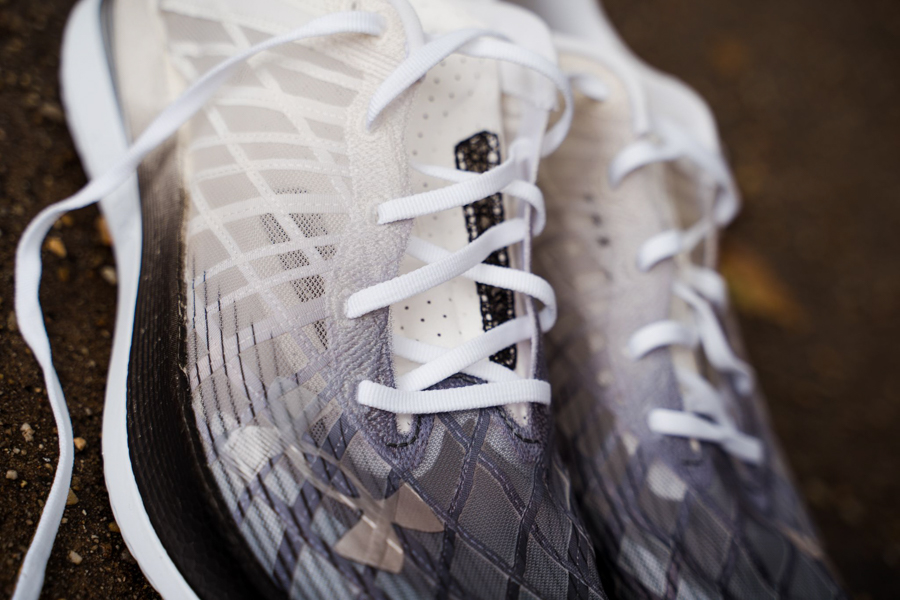
BRANDON: The WARP 2.0 upper provides a nice lockdown through the midfoot and toe box. It has a snug and narrow fit that makes it easier to corner, change speeds, and hit top speed with ease. Under Armour’s upper is transparent and extremely breathable, providing an airy and swift feel throughout the stride. The new implementation of Pebax foam is the best decision Under Armour made. It provides a snappy, rigid, and fast feel underfoot and helps power the carbon plate wedged between the two foams. While the pebax is soft and impressive, there simply isn’t enough of it underfoot for a more cushioned ride to take you through the entire marathon distance.
However, the Under Armour Flow Velociti Elite won’t let you down for workouts, tempo days, or if you’re in a pinch to race a 5k or 10k. Even though the shoe doesn’t provide any additional outsole rubber coverage, it doesn’t need it. The traction on the bottom of the Flow foam is good enough to keep you on your feet. I ran some of my most impressive workouts and hit some of my fastest times of the season in the Flow Velociti Elite, and I’m happy to report that it is a very fast shoe.
CHAD: After several runs in the Flow Velociti Elite, including two speedwork sessions and a weekend training long run, I think Under Armour is really onto something here. For me, the initial step-in comfort of the shoe exceeds that of its super shoe competitors, which I attribute to the shoe being a bit wider throughout than my Vaporfly Next% 2 and the Adios Pro 3.
The mesh on the upper is flexible and form-fitting to the foot while still feeling structured and sturdy because of the lattice-work overlays. The tongue (NOT gusseted, by the way) has just enough padding to it to prevent lace bite on the top of my foot while not adding unnecessary weight or bulk. I was also pleasantly surprised by the grip of the shoe, despite not having any outsole rubber below the supercritical Flow foam. I’m not sure how it would hold up after 100 or so miles, but after 20 miles, I was shocked at how well it lasted.
When it comes to super shoes, in addition to fit and performance, I look for two important factors: what is the stability like when leg fatigue sets in, and how do my legs feel on the day after a run in them? The Flow Velociti Elite exceeded my expectations in both regards. The shoe features dual layers of foam; a Pebax foam underfoot in a cradle of Under Armour’s Flow foam the entire length of the shoe. Combine that duo with the carbon plate sandwiched in between, and the ride was incredibly fast and snappy while also being quite stable.
At no point did I ever feel wobbly or worry about how my ankles would feel in the hours after the run. The two days before my weekend long run in the Flow Velociti Elite, I spent building a swing set for my kids, and my legs were trashed. I’m talking tight hamstrings and glutes, quads on fire, and just overall soreness from feet to hips. Despite going out and doing my run on legs that were already beat up, I had a very solid run and felt surprisingly fresh the next day. A true testament to the performance and protectiveness of the shoe.
Oh, and here’s a statement I am making with absolute, 100% certainty. This shoe, in the ombre green to teal colorway, is the best-looking shoe in my entire shoe closet. I have seen some good-looking running shoes in my day. This one tops them all for me. Under Armour nailed it with this release, which I find much more appealing than the black, white, and gray colorway that was a limited release last year.
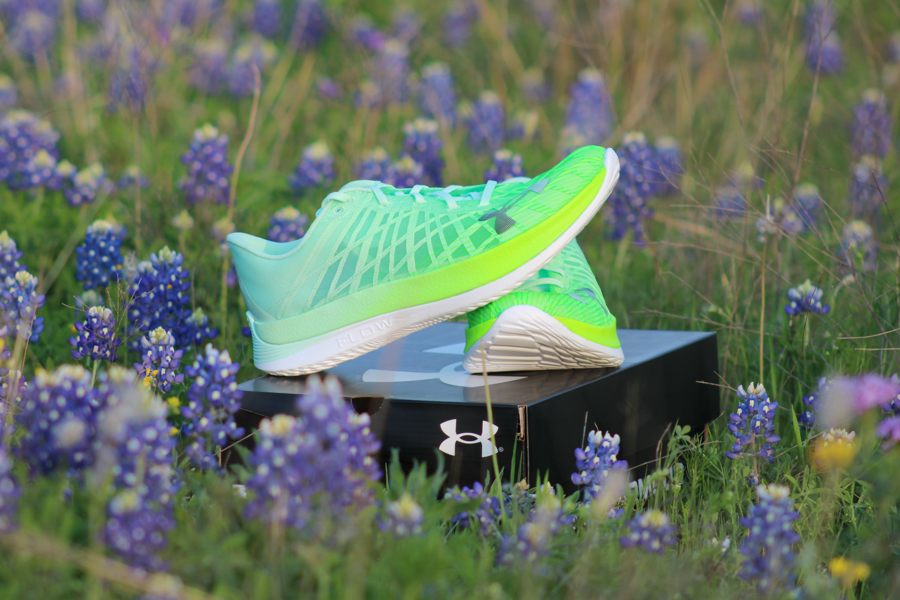
RUBY: Straight out the box, this is one of the most comfortable shoes I’ve worn in a while. Don’t be fooled by the plastic-like WARP 2.0 upper, similar to the original Nike ZoomX Vaporfly Next%, the lockdown feel is secure and snug, yet breathable and accommodating as your foot expands throughout longer runs. Even though I don’t have a particularly wide foot, I think this is a great option for those who do, as the added room in the toe box and stretch of the upper will easily mold to the shape of your foot rather than the other way around. With the temperatures rising (hopefully!), the UA WARP 2.0 Upper allows the foot to breathe and not overheat, perfect for Summer running!
Weighing in at 7.7 oz. for a US M9, the Flow Velociti Elite fits seamlessly in with its competitors like the 7.9 oz. Nike Zoom Alphafly Next% 2 and 7.6 oz. Adidas Adizero Adios Pro 3. Similarly, the $249 price tag and 36 mm stack height position it alongside the top tier of super shoes. I see this one logging significantly more miles than its competitors, making it a great option for training runs. Despite what the scales say, the shoe felt far lighter and more fluid underfoot — it’s not at all as clunky or wobbly as other super shoes feel at first.
On a spectrum from traditional racing flats to a pillow on springs, the Under Armour Flow Velociti lands closer to the traditional end with considerably less cushioning than many super shoes. Designed as a marathon racer, I think the Flow Velociti Elite could do with more cushioning and bounce to help you through the final miles. After 26.2 miles, I think you may find your legs more beat up than we’ve got used to in this super shoe era.
However, what the UA Flow Velociti Elite lacks in pop it makes up for in stability. As we’ve seen with the Nike Zoom Alphafly Next% 2 and the Nike ZoomX Vaporfly Next% 2, these high-stack super shoes have a tendency to feel unstable and wobbly, almost an ankle sprain waiting to happen: you won’t have that problem with the UA Flow Velociti Elite. Offering a firmer ride and good ground contact feel, this shoe is ideal for fans of traditional racing flats not wanting to miss out on the performance-enhancing super shoes.
One place I think this shoe could excel is on towpaths, dirt roads, and runnable trails. While current super shoes are relatively rare on the trails, this won’t be for long. I’m no marketing executive, but I think Under Armour could get a jump on its competitors here: the durability of the Flow Velociti Elite combined with its stability gives runners the confidence to take a super shoe to the trails and other softer surfaces. I also give this shoe the seal of approval on the track, finding it perfectly stable and reliable around the bends.
SETH: I feel that the geometry of most carbon-plated shoes on the market today tends to be a bit wobbly or unstable. The Flow Velociti Elite is stable, and one of the few super shoes where you don’t have to worry too much about rolling your ankle on each step. It’s a simple speed shoe, and I like that. After initially lacing it up for my first run, I thought, “This shoe feels harder than David Goggins!” To my surprise, when I reached the 7-minute pace range, the supercritical Flow and Pebax foam blend felt soft as a pillow… with a carbon fiber plate under it. The upper is constructed of WARP 2.0, a breathable material that looks pretty cool since it’s see-through, and on top of that, it’s as light as a feather. The weight of this shoe didn’t cross my mind once.
Shop Under Armour Flow Velociti Elite - Men Shop Under Armour Flow Velociti Elite - Women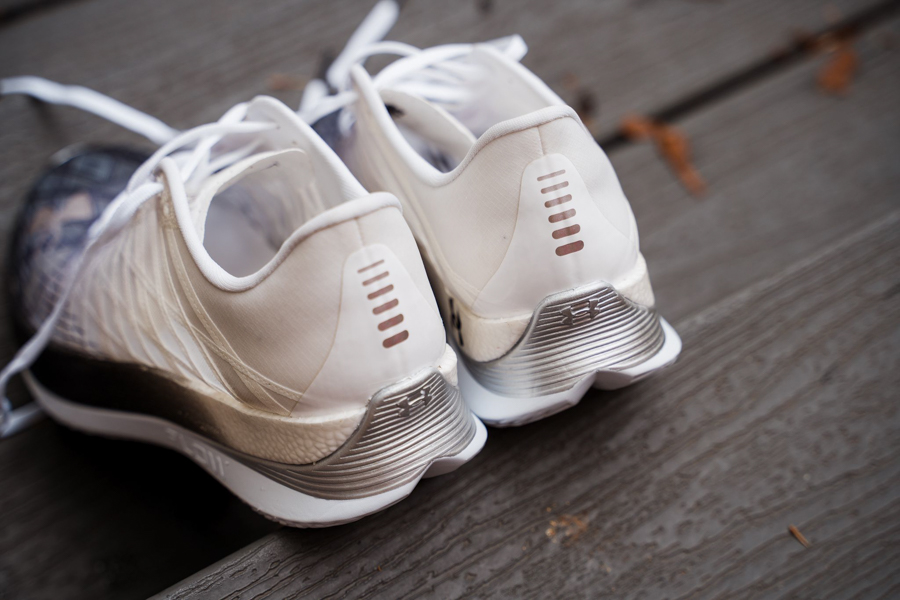
BRANDON: I definitely have a few knocks for this shoe. It was by far from perfect, and at times I questioned whether I could toe the line in Under Armour’s latest race day pick. On an 18-mile long run leading up to the Baltimore Marathon, I experienced blisters on the lateral edges of both my feet. They were painful enough to make me have to tape my toes for added protection in those areas.
Unfortunately I had a few other problems. Under Armour’s proprietary Flow foam is far from desirable. While it provides structure and stability to the shoe, its firm and dense properties make it difficult to want to run an entire marathon. After mile 18 of the marathon, I was pretty much ready to part ways with the shoe. What Under Armour should have done was remove the Flow foam completely and add more Pebax underfoot. This would have helped provide a similar feel to that of the Saucony Endorphin Pro 3, which is one of the best race day shoes of the year.
Instead, I’m out here comparing the shoe to the Saucony Endorphin Speed 2, last year’s model, which saw little update or improvement over the original. Under Armour is still behind the eight ball for innovation and technology. What came out this year should have come out two years ago. Whatever prototypes with more cushion and stack they may have in their labs (I can only assume that’s what they are doing, considering all other footwear companies are moving in the same direction) should have come out this year.
CHAD: This list will be short because I found very few things wrong with this shoe, and some of them are likely issues personal to me. The placement of the Under Armour logo overlay falls squarely on my pinky toe, and I noticed it caused some rubbing with my thinner socks. The collar gets a little baggy around the ankle during the run, so if you prefer something that is tighter around the ankle this might bother you. And lastly, while I appreciated the width throughout the shoe, I have a narrow right heel. During the run, even when tightly tied, I could feel my heel moving side-to-side a bit within the upper. However, that’s more of a me problem than an issue with the shoe, but if you have a narrow foot or heel, it’s something to consider.
I’m also not sure if I would wear the Flow Velociti Elite for a full marathon. With a slightly lower stack than many other long distance racing shoes, I think this would max out for me at a half marathon. What can I say, I’m no Sharon Lokedi. That, and the $250 price tag, puts it at the same price point as the Vaporfly Next% 3 and Adios Pro 3 and is more expensive than the Endorphin Pro 3. It’s a bold strategy Cotton, let’s see if it pays off for them.
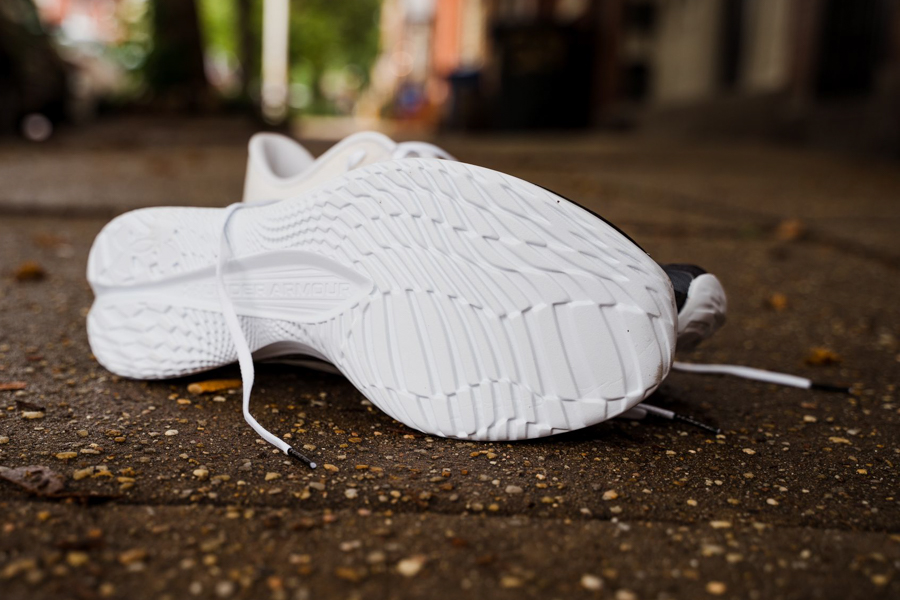
RUBY: The Flow Velociti Elite blends in but does it stand out? If you’re someone who likes a bouncy and propulsive ride, the shoe may stand out for the wrong reasons. The UA Flow Velociti Elite does not have the rocker feel of the Hoka Rocket X2 or the softness of the Nike ZoomX Vaporfly Next% 2, so if you’re looking for that, this is not the shoe for you. However, I think this shoe is a bit of a maverick, bridging the gap between a traditional racing flat and a pillowy super shoe. This will be a great shoe for runners looking for increased firmness and ground contact feel or a more stable super shoe to take to the track or trails.
SETH: After my most recent 10-mile run in this shoe, I started feeling a bad sensation in my Achilles. It was almost as if the shoe had a low drop, and my Achilles was being stretched out. However, it has a fairly standard 8 mm drop. The pain could also be from running high mileage, but when I run in my daily shoes (Asics Nimbus 25), it’s nonexistent. This made me want to stop running in this shoe.
Most super shoes that I’ve tried have a nice roll-off feel to increase efficiency and propel you forward, but the Flow Velociti Elite feels flat as a pancake. If I lace up a super shoe, I want to feel like it will make me fast, and this just didn’t provide that feeling for me.
I immediately noticed that this shoe has no rubber on the outsole. Apparently, the Under Armour Flow foam has excellent traction and was designed this way to decrease weight. I didn’t have an issue with the grip on the road, but if it’s race day and it’s going to rain, I don’t think I’d feel so confident without rubber on the outsole.
Finally, this shoe costs $250. If I spent that much money on this shoe, I would be pretty disappointed. The feeling you get when you put this shoe on isn’t worth $250, it’s closer to $140.
Shop Under Armour Flow Velociti Elite - Men Shop Under Armour Flow Velociti Elite - Women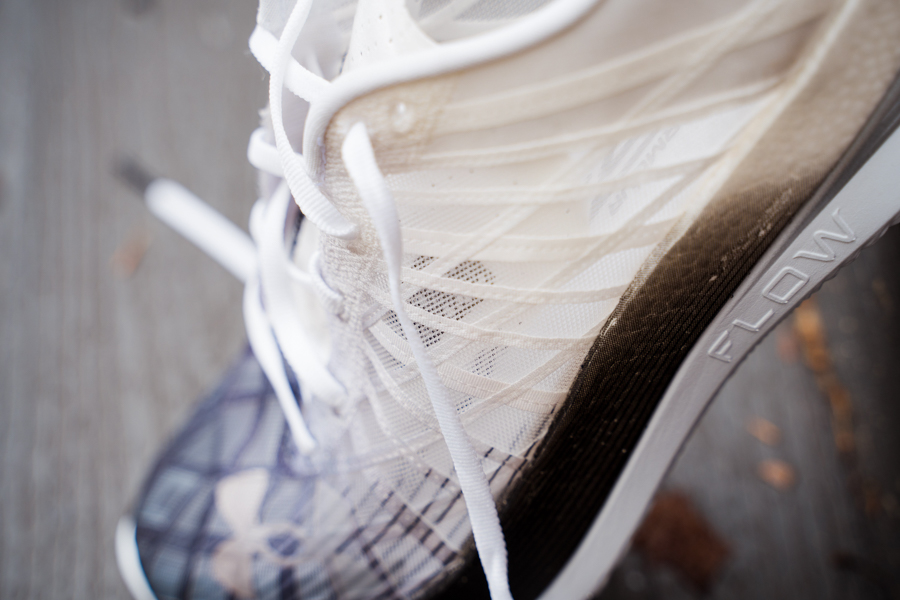
BRANDON: It’s hard to completely love this shoe, even though it has some incredible qualities about it, including its fast feel, nimbleness, and the implementation of Pebax foam. It’s not my first-choice race day shoe, but it probably isn’t my last, either. Under Armour has developed a great 5k to half marathon racer, but it just lacks the cushion and support to carry a runner through 26.2 miles.
Had Under Armour coined this as its premier tempo shoe, I would have been blown away by its performance. I most likely won’t be reaching back to get any more miles in this shoe, but I’m excited to see what the Baltimore-based brand comes out with in the future. Under Armour’s footwear development team is getting better, but just not quite fast enough.
Right now, it feels like they are a year or maybe two behind the game. Under Armour should look to companies like New Balance, Hoka, or even Puma, who have developed some of the softest foams in the game. I see that they’re trying to develop something similar to the Saucony Endorphin line, and while that is a good line, you don’t want to be the copycat who’s late to the game. For $250, you could grab one of the better workout companions of the year, but you might not want it to be your first choice for race day.
CHAD: I’m not as fast of a runner as my Believe in the Run comrades. There’s a reason my nickname around here is The Clydesdale. But one of the best things about running is that it is and can be for everyone, and when it boils down to it, speed is all relative. When I first put on the Under Armour Flow Velociti Elite, I felt like I was the fastest runner that I could be. Then when I actually hit the road, that initial feeling I had became my reality.
During my first speedwork run, I somehow accidentally ran my warm-up miles at a pace that was 30 seconds per mile faster than my normal warm-up. My speed intervals during that session felt almost effortless, and I actually had to slow down a bit to meet my pace goals. Any shoe that makes my runs easier and makes me a better runner is a winner in my book. If you’re at the Broad Street Run in Philadelphia, Penn., on April 30, don’t be surprised if you see this one on my feet.
RUBY: Overall, I’m really impressed with Under Armour’s entry into the super shoe race. The lockdown and feel underfoot are great, as well as the durability, especially given its lack of an outsole. Priced at $249, comparable with other super shoes, I believe the Under Armour Flow Velociti Elite offers considerably better value for money.
I’m keeping my eyes peeled for version two. With a few minor tweaks, Under Armour could have an excellent shoe that may even outperform the bigger brands. Oh, and did I mention that Sharon Lokedi won the 2022 New York City Marathon, her first time racing the distance, in a version of this shoe? If you want to know what winning the NYC Marathon feels like, the Flow Velociti Elite may be the closest you’ll get.
SETH: With so many super shoe racing options, the Flow Velociti Elite stands out. It’s simple.
The design provides a stable, lightweight ride that feels good to pick up the pace in. If you’re someone in the market for a speed shoe who tends to lack stability, I think this is worth checking out. If you’re someone that loves fun, bouncy racing shoes like the Hoka Rocket X 2, the Saucony Endorphin Pro 3, or the Asics Metaspeed Sky+, you will most likely be disappointed. I don’t believe this shoe compares to its competitors and is not worth $250.
Would I mind running in it again? No. Would I be excited? No. I think Under Armour has a lot of improvements to make on this shoe before it reaches that level.
You can pick up the Under Armour Flow Velociti Elite for $250 at Running Warehouse (featuring free 2-day shipping and 90-day returns) using the buttons below.
Want to learn more about how our review process works? Check out this guide.
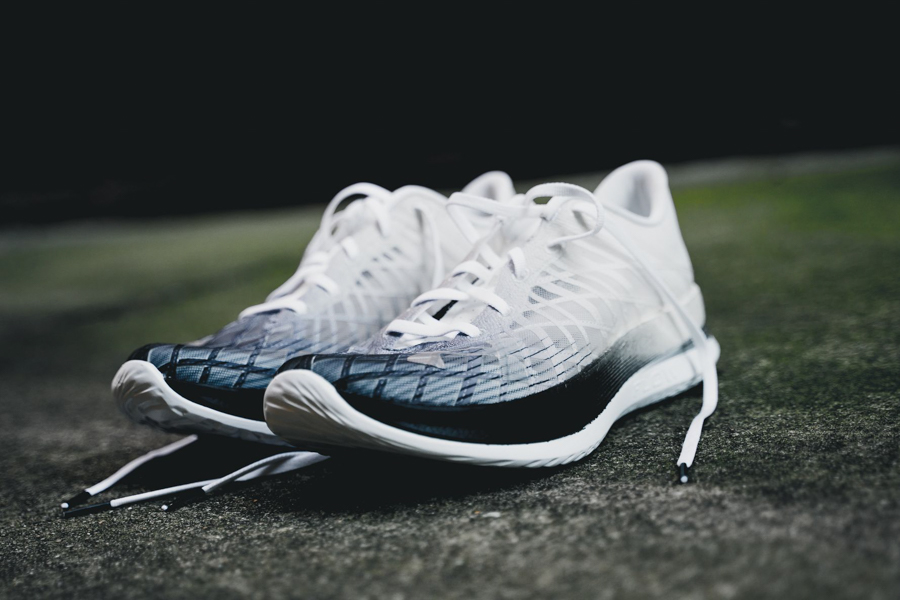
Have something to say? Leave a Comment
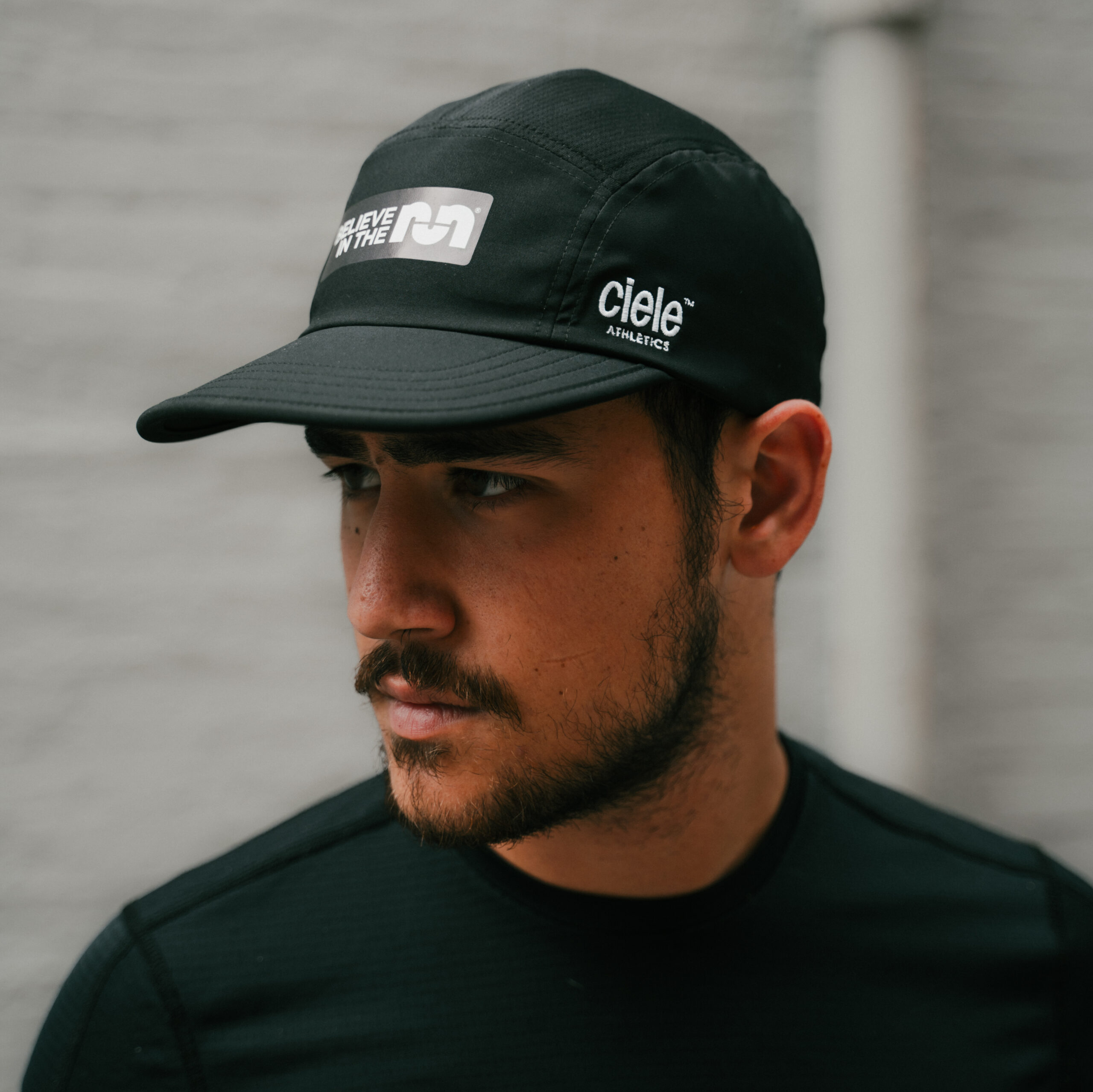
In addition to his photo and video skills, Brandon is also a producer for The Drop podcast and founder of the Believe Run Club in Baltimore. He is a tried and true product of the running system, competing in cross country and track and field at the Division 1 collegiate level.
All-time favorite shoes: NIKE Alphafly NEXT%, ASICS Novablast 3, Saucony Endorphin Speed 2.
More from Brandon
An attorney by day, Chad lives in Central Pennsylvania with his wife and three kids. Never much for running growing up, Chad began running as a way to improve his physical health. He went from his first 5k in 2015 to running the Paris Marathon in 2016. Given his larger physical build, Chad is the resident Clydesdale runner, providing shoe and gear insights for those with a bigger build and taller stature.
More from Chad
Ruby is an NCAA Division 1 student-athlete, running shoe geek and all-around exercise science nerd, originally from the United Kingdom. An aspiring pro runner, Ruby currently competes on all terrains– road, track, and cross country– from the 3000m distance up to the half-marathon. A true mileage junkie, Ruby has plenty of opportunities to test out different shoes and properly put them through their paces.
All-time favorite shoes: Nike ZoomX Vaporfly Next%, Hoka One One Clifton 6, Nike Zoom Vomero 14
More from Ruby
Seth Epley is an ultramarathoner and avid outdoorsman. After graduating high school, Seth struggled with drinking and was ultimately unhappy with the way he was living. Running became a remedy, and 3 years later he ran his first 200-mile race and has maintained a 100% sober lifestyle. In addition to running, he enjoys archery, videography, photography, and all things outdoors.
More from Seth
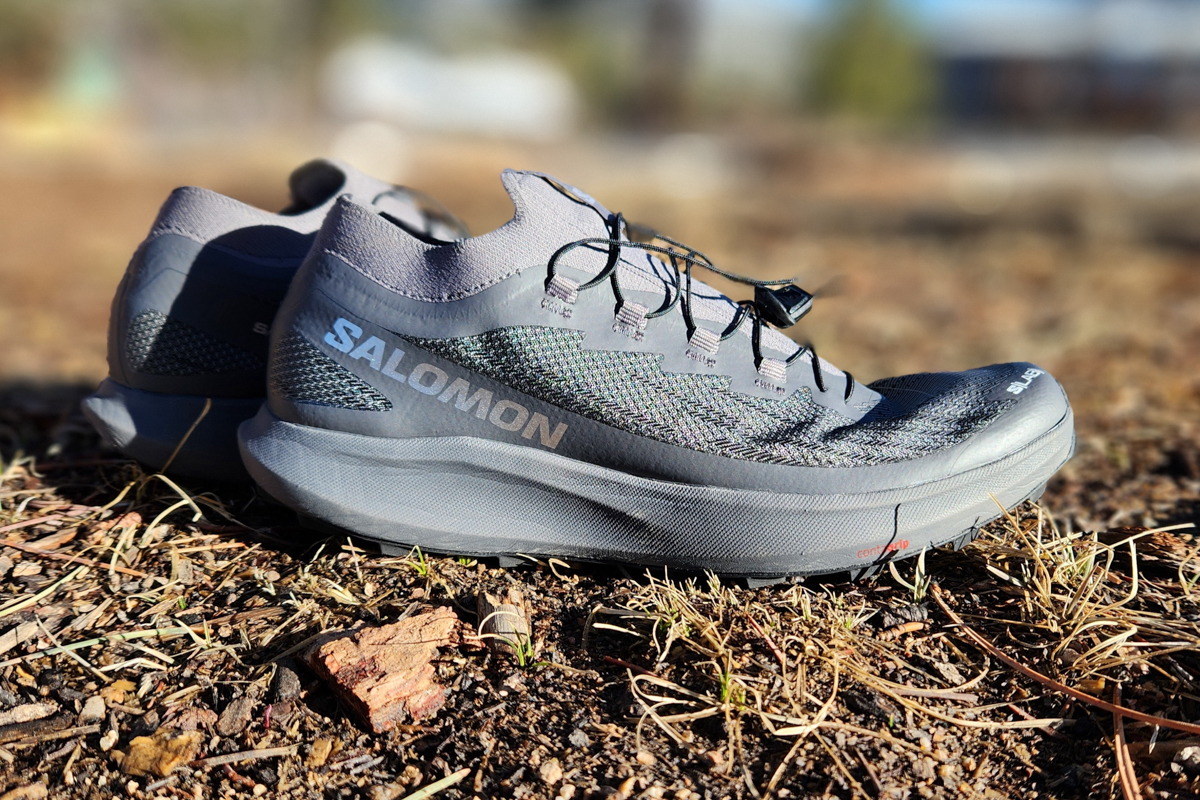
I absolutely love this shoe. It reminds me of a Kinvara 13 supershoe. I picked up the endorphin speed 3 shoe everyone raves about and I wanted to throw it in the trash but it was too expensive so I pretend to like it so i can put miles on it. I actually use them if it might rain while I’m out.
This idea that shoes need to be stacked like the empire state building and have the softness of pillows from a 5 star Ramada Inn is mind boggling. Not everyone wants this HOKA effect. In fact I don’t see any of you praising the HOVR shoes that are basically stacked marshmallows in quicksand that UA came out with. Chad hit the nail on the head that “it feels as hard as David Goggins” but during the run it’s very smooth and easy transitions. Unfortunately runners today try them on in the store and immediately form an opinion because they don’t feel like the ultra boost.
I don’t see UA as being two years behind. I see they made a first generation shoe (one that won the NYC marathon) and can make minor improvements on. But I love this doesn’t have a stone bruising rocker, an enormous stack height and unnecessary cushion.(it’s for running fast paces not standing at Walmart for an 8hr shift.) it’s more of a racing flat with the added stamina of a plate.
The price is ridiculous and they have lowered it, but that’s UA pricing model and you don’t have to be Sherlock Holmes to find an easy 20% off.